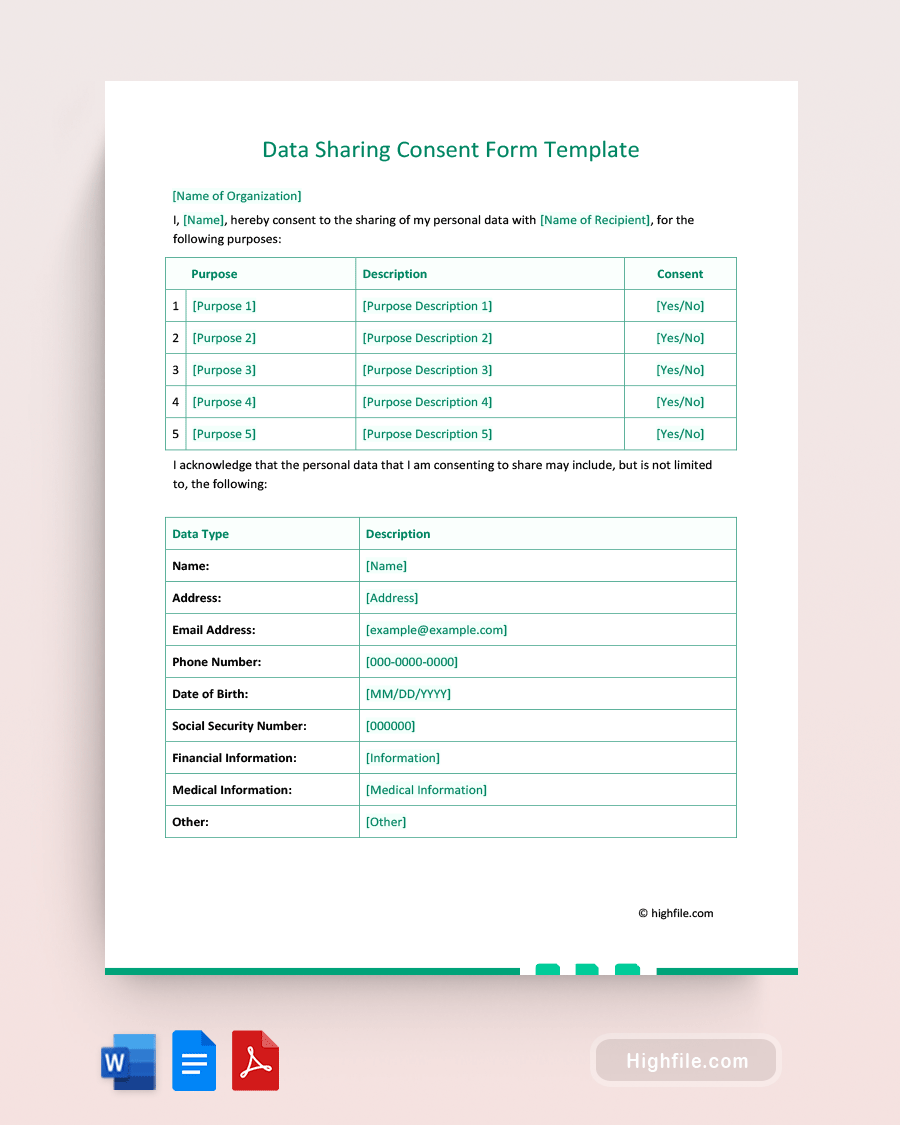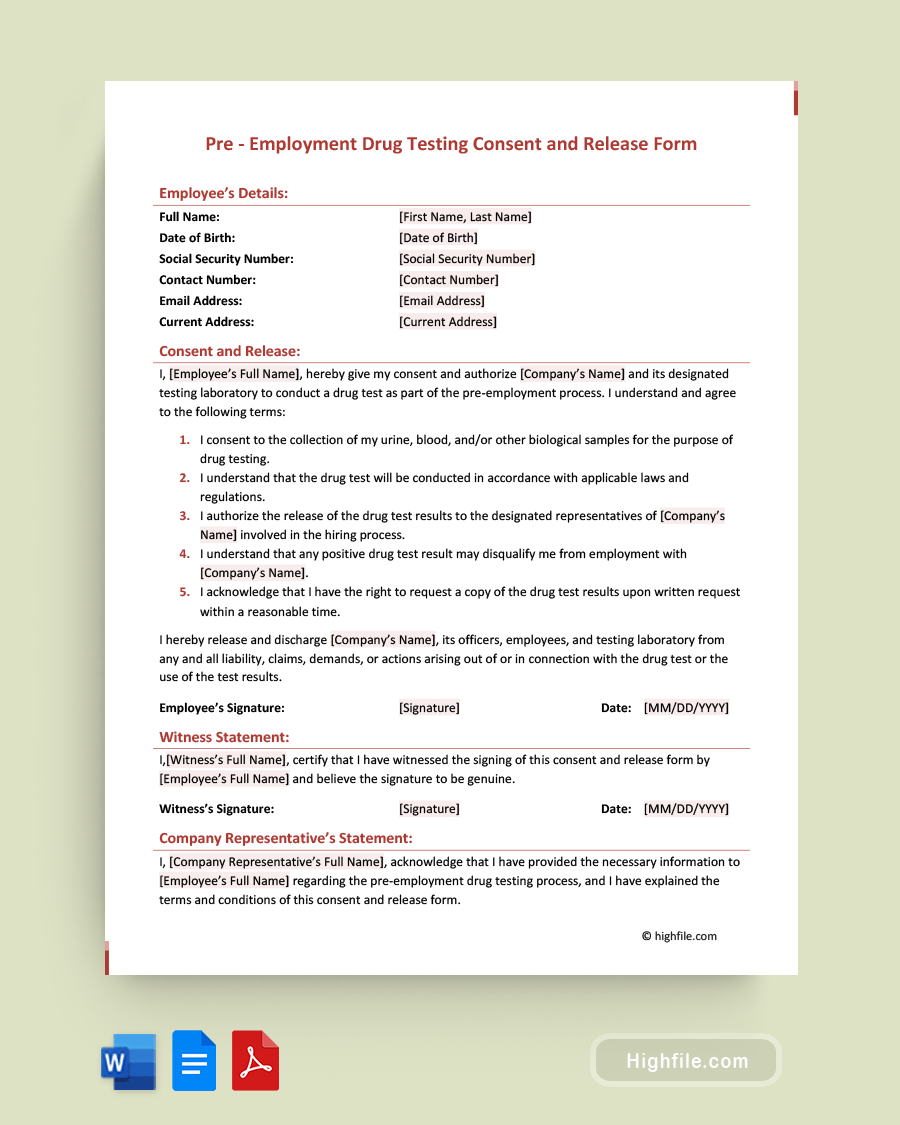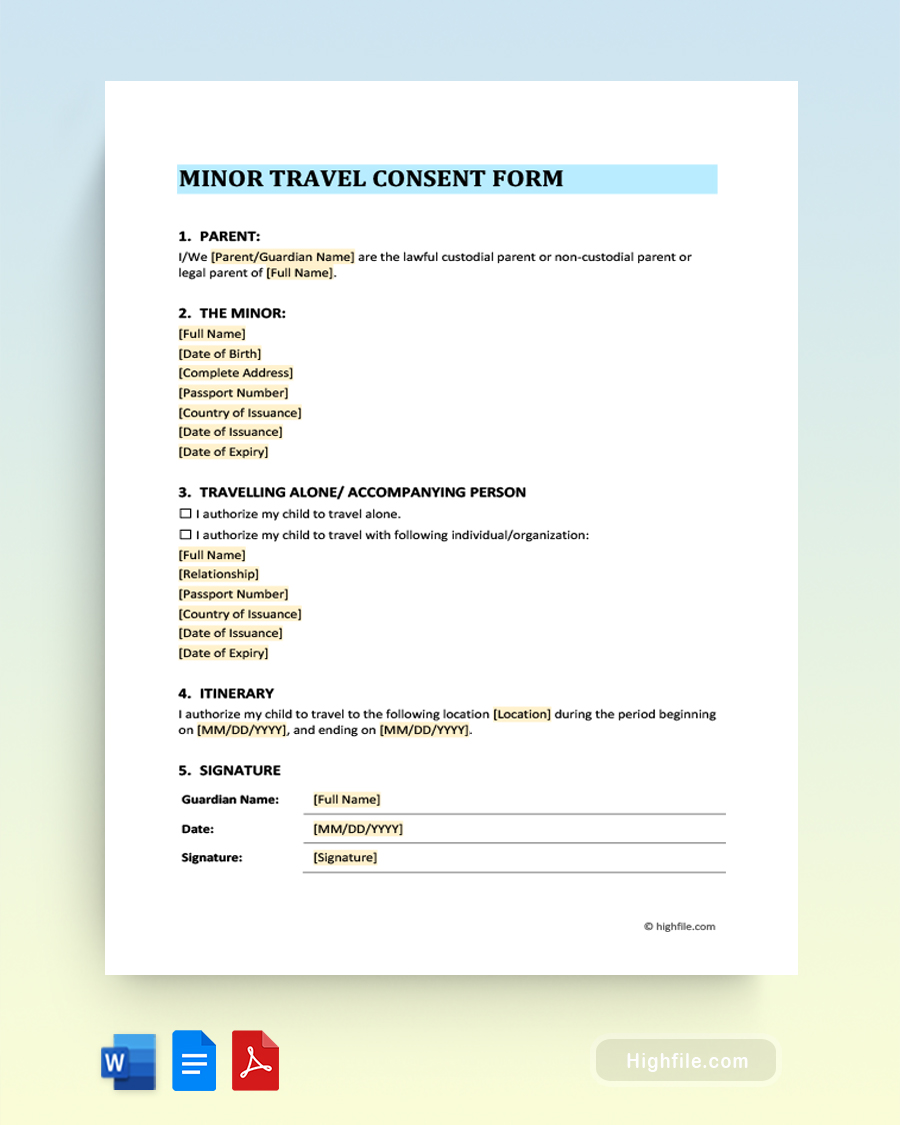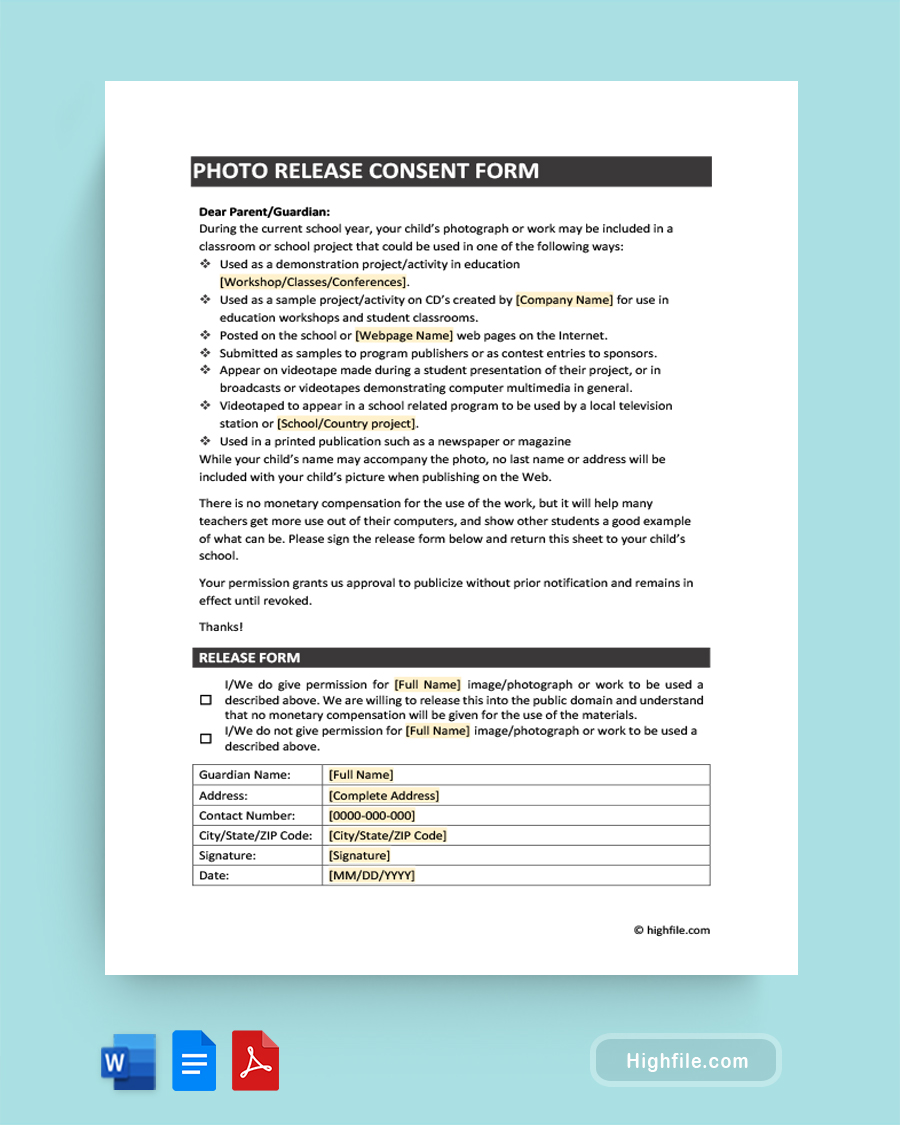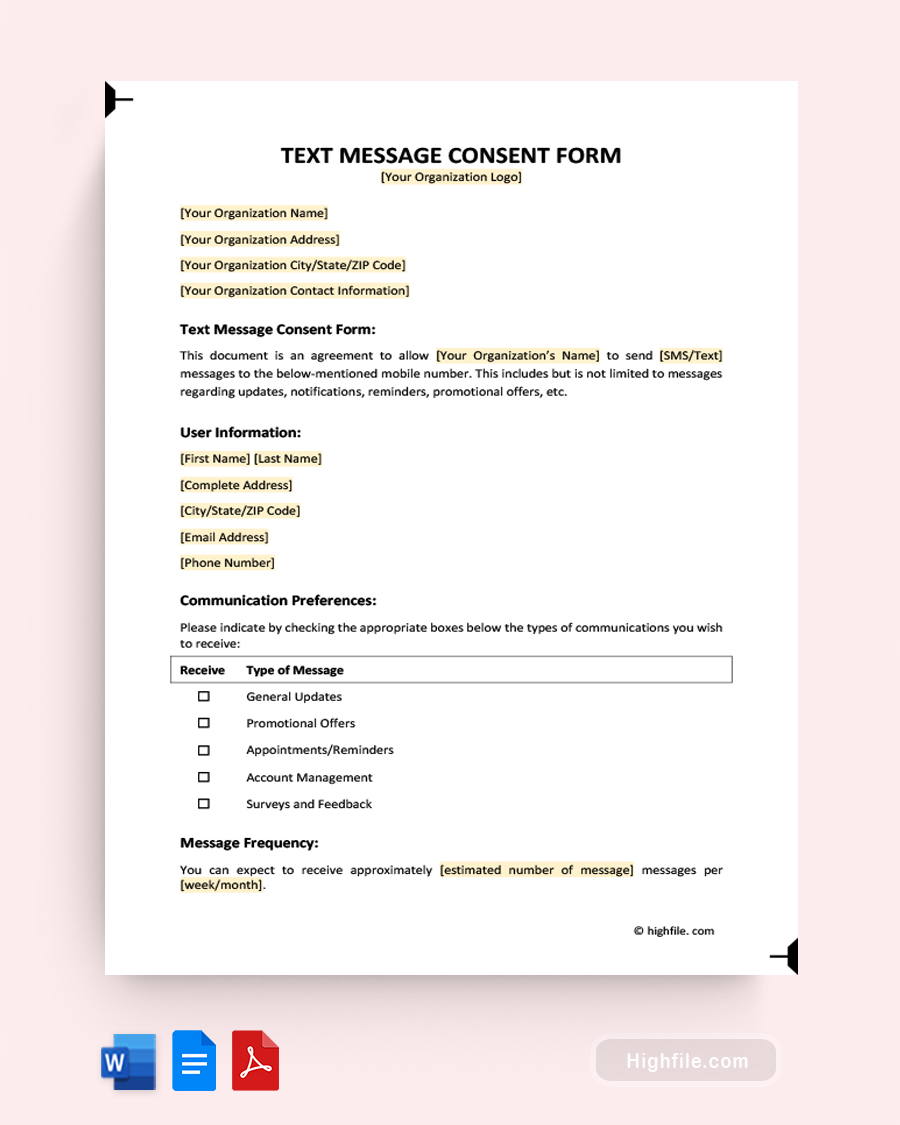Everyone should be on guard for data breaches, but that doesn’t mean you should never share data. When you’re the one collecting the data, it’s essential to be careful and transparent about your practices. One excellent way to do this is with a Data Sharing Consent Form. When you have people sign one of these documents, it means they understand what information you want, why, and where you intend to keep or share it. Using our Data Sharing Consent Form Template, you can easily create a customizable agreement that allows you to collect the info you need with permission from its owner.
What Is a Data Sharing Consent Form?
A data sharing consent form is a document used to obtain permission from an individual or organization to share their data with other parties. This form typically outlines the purpose of the data sharing, the types of data that will be shared, and the parties who will have access to the data. The form may also include information on how the data will be used, how it will be protected, and any conditions or limitations on the data sharing. Data sharing consent forms are commonly used in healthcare, research, and other industries where personal or sensitive information is involved to ensure that data sharing is ethical and responsible.
Components of a Data Sharing Consent Form Template
The components of a data sharing consent form template should be simple and easy to understand regardless of the information you need. Below is an outline of the various sections and why you need each.
- Form Title- At the top, it should read, “Data Sharing Consent Form” in large, bold print to indicate the document’s purpose.
- Organization- This section indicates who is collecting the data.
- Consent Statement- Sometimes called an “I” statement, this says that the (named) individual agrees to share the information below with the (named) individual or organization.
- Chart of Data, Purpose, and Consent- A three-column chart belongs in this section. The first column names the information, the second describes it, and the third includes a yes/no consent to release the data.
- Acknowledgment Statement- The acknowledgment shows that they understand the scope of what they are sharing.
- Information Chart- The secondary information sheet shows the following categories and briefly describes what each is for. However, depending on what you collect data for, you may only need some of these categories, and some require little to no explanation.
- NameContact InformationDate of BirthSocial Security NumberFinancial InformationMedical Information
- Other Information
- Assent Statements- Assent statements also help clarify the subject’s understanding. They show that the person has read the form, understood it, asked questions, and received satisfactory answers, and they know why they are allowing this access. It should also cover their understanding of applicable laws, especially when data is being shared internationally.
- Name, Signature, and Date Lines- By printing and signing here, the subject formalizes their agreement to share data.
Interesting Fact: The concept of asking for consent is far older than you might think. The earliest known consent dates back to Babylonia, one of the earliest civilizations in human history with a written legal system. The Code of Hammurabi, created in Babylonia around 1754 BCE, is one of the oldest known legal codes in the world. The code covered various aspects of Babylonian society, including property, trade, marriage, and family laws. The Code of Hammurabi also included laws related to consent, particularly in the context of marriage and sexual relations. For example, it specifies that a man must obtain the consent of a woman’s father before marrying her. Even in ancient times, there was an understanding of the importance of obtaining consent in certain situations, and that consent was recognized as a legal and ethical principle.
Legal and Ethical Considerations for Data Sharing Consent Forms
Many practical considerations go into the development of consent forms for data sharing. The legal and ethical implications of the practice should always come first. In seeking these answers, it helps to ask yourself questions such as, ‘what are the goals of the data sharing’ and ‘what are the expectations for privacy?’ Here are some of the most crucial things to keep in mind:
Legal Considerations
- Compliance: Consent forms must comply with data protection laws such as GDPR, CCPA, and HIPAA.
- Explicit Consent: The consent form must be clear, specific, and unambiguous about what data is being collected and how it will be used and shared.
- Age Restrictions: The parent or legal guardian must sign the consent form if the data subject is a minor.
- Revocability: Individuals should have the right to revoke their consent at any time.
Ethical Considerations
- Transparency: Consent forms must be transparent about how the collected data will be used and shared.
- Fairness: Data sharing should be fair, and the subjects should not be discriminated against based on personal information.
- Respect for Privacy: Personal information must be collected and shared in a manner that respects the privacy of individuals.
- Informed Consent: Individuals must be fully informed of the risks and benefits of data
FAQs
Data sharing consent forms are relatively simple on the surface. However, depending on the circumstances, they can offer unprecedented access to a vast amount of information. We’ve answered the most frequently asked questions about this topic below to help you utilize these crucial documents properly and get the most from your template.
In most cases, you can revoke your consent for data sharing at anytime. When you withdraw your consent, the organization or party given access to your data must stop using and sharing your information. They must also delete or destroy any copies of your data that they have unless there is a legal obligation to keep it. It is important to note that revoking your consent may not affect any actions taken prior to your revocation.
Additionally, revoking your consent may affect the ability of the organization or party to provide you with certain services. For example, if you withdraw your consent for a healthcare provider to share your medical data with a specialist, the specialist may be unable to provide optimal care. In some cases, the organization or party may only be able to provide you with services if data sharing is allowed because it is a necessary part of their operations. You should always carefully consider the implications of revoking your consent for data sharing before doing so. You should discuss your options with the organization or party involved or seek legal advice if necessary.
There are several laws and regulations that govern data sharing consent forms, depending on the industry and the type of data involved. Here are some examples:
ᐅ Health Insurance Portability and Accountability Act (HIPAA): HIPAA is a federal law that regulates the use and disclosure of protected health information (PHI) by covered entities, such as healthcare providers, health plans, and healthcare clearinghouses. HIPAA requires covered entities to obtain written consent from patients before sharing their PHI with other parties, except in certain circumstances.
ᐅ General Data Protection Regulation (GDPR): GDPR is a European Union (EU) law regulating the processing of personal data by organizations operating in the EU or processing the data of EU residents. GDPR requires organizations to obtain clear and explicit consent from individuals before collecting or sharing their personal data and to provide individuals with certain rights and protections related to their data.
ᐅ Children’s Online Privacy Protection Act (COPPA): COPPA is a federal law that regulates the collection and use of personal information from children under the age of 13 by online services, such as websites, apps, and games. COPPA requires operators of these services to obtain verifiable parental consent before collecting or sharing personal information from children.
To ensure that your rights and interests are protected when signing a data sharing consent form, it is essential to read the form carefully and understand the purpose of the data sharing, the types of data that will be shared, and the parties who will have access to the data. Ask questions, seek clarification from the organization or party involved, and consult with legal or other professional advisors if necessary. Additionally, some data sharing consent forms may provide options for limiting or revoking consent, which can help you to maintain control over your data.
The need to obtain consent for data sharing depends on the laws and regulations governing the data type and the industry. In general, however, obtaining consent from all individuals whose data will be shared is a best practice. Doing this helps to ensure that individuals are fully informed about the proposed data sharing, have the opportunity to control how their data is used, and are protected against potential misuse of their data.
Certain exceptions or circumstances exist where consent may not be required for data sharing. For example:
ᐅ Legal Obligation: If data sharing is required by law, such as in response to a court order or subpoena, consent may not be necessary.
ᐅ Public Interest: If data sharing is necessary to protect the public interest, such as in the case of public health emergencies or law enforcement investigations, consent may not be required.
ᐅ Anonymized or Aggregated Data: If the data being shared has been anonymized or aggregated to the point where it cannot be used to identify individuals, consent may not be necessary.
However, even in these cases, it is vital to ensure that appropriate safeguards are in place to protect the privacy and security of the data being shared. It is also important to be transparent about data sharing and to provide individuals with information about their rights and options, even if consent is not required.
There are several risks associated with data sharing, especially when consent forms are involved. For example, it can lead to unintended privacy violations if sensitive or personal data falls into the wrong hands or if the information is shared beyond the original intended purpose. Data sharing can increase the risk of data breaches and identity theft if appropriate safeguards, such as encryption or access controls, are not in place. Additionally, it could result in the misuse of data if the data is used for purposes that are not authorized or if the data is sold or shared without proper consent, or create legal liability if the organization or party responsible for the data is found to have violated privacy or data protection laws.
To mitigate these risks, it is crucial to carefully review and understand data sharing consent forms before signing them and to ask questions and seek clarification if necessary. You may also want to consider limiting the scope of data sharing to the minimum needed for the intended purpose and ensure that appropriate safeguards are in place to protect the privacy and security of the shared data.
Key Points
A data sharing consent form is a legal document used to obtain permission from individuals to share their personal information with third-party organizations or individuals. This form helps to ensure that the privacy and security of personal data are protected when it is shared. When you collect personal information from individuals and plan to share it, you should always have the owner of the information sign a data sharing consent form because obtaining explicit consent from individuals before sharing their data is essential to avoid any legal liabilities. Creating and customizing one of these vital documents is fast and simple when you use our Data Sharing Consent Form Template.
